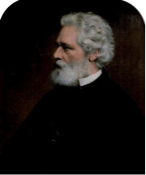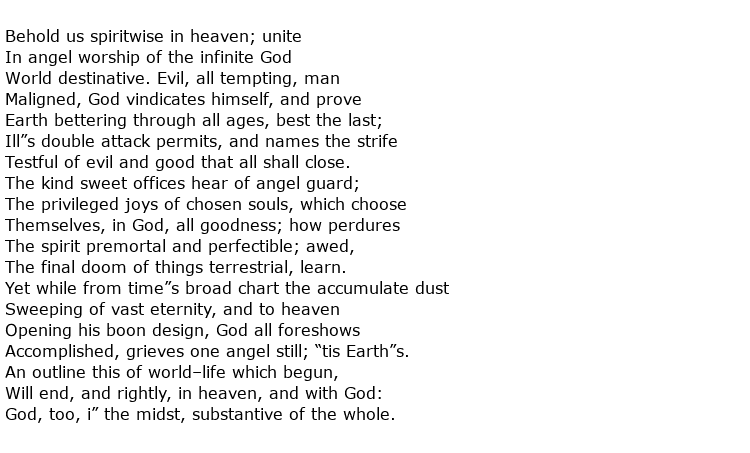 Philip James Bailey was a 19th century English poet who belonged to the so called “Spasmodic School”, a group of writers of the Victorian era which included the likes of George Gilfillan and Ebenezer Jones. Bailey’s best known work was the epic and highly complex multi-part piece which appeared under the title Festus and which ran to over 40,000 lines in total.
Philip James Bailey was a 19th century English poet who belonged to the so called “Spasmodic School”, a group of writers of the Victorian era which included the likes of George Gilfillan and Ebenezer Jones. Bailey’s best known work was the epic and highly complex multi-part piece which appeared under the title Festus and which ran to over 40,000 lines in total.
He was born on 22nd April 1816 in the city of Nottingham and received a good education including being taught the classics by a Unitarian minister called BenJamin Carpenter. He also studied English poets, in particular the work of Lord Byron. His parents perhaps had ambitions that their son should become a Presbyterian minister when they sent him to Glasgow University. Bailey had other ideas though and, at the age of seventeen, he left Glasgow and travelled south to London where he commenced studies in law at the offices of a solicitor. The following year he entered Lincoln’s Inn and was called to the bar in 1840 but he never actually got to practice law. Curiously though, at the grand old age of 85, he was awarded an honorary Doctor of Laws (DLL) by the University of Glasgow.
Bailey could never be described as a prolific poet as he devoted much of his writing effort into producing the voluminous poem, Festus. It was first seen in 1839, published anonymously, and he produced a second edition six years later. Once complete there were twelve separate divisions of verse heavy with theology and philosophical themes. It is believed that Bailey’s intention was to describe the relationship of man with God and to

Here is the first verse from Festus I:

The work was well received at the time, by literary critics such as the American Margaret Fuller, although she expressed some reservations. Fellow poets such as Alfred Lord Tennyson were enthusiastic admirers and there are clear references to its style and substance in Henry Wadsworth Longfellow’s The Golden Legend, written in 1851. Many tried to define the approach that Bailey was taking with this epic work but the poet himself described it as “omnist”.
Bailey tried but failed to reach the heights of Festus with his subsequent literary attempts. He failed with pieces such as The Angel World, published in 1850, and others such as The Universal Hymn in 1867. Rather than waste this work though he incorporated extracts from several poems into Festus wherever he could make the lines fit. The final edition was over 40,000 lines in length when published in 1889. As a so-called “Spasmodic” poet Bailey was popular at the time – Elizabeth Barrett Browning admired his “fire of imagination” – but the work of this school of poetry is not popular nowadays.
In his later years Philip James Bailey travelled a lot and lived in London and Devon before eventually returning to his roots in Nottingham. An attack of influenza proved fatal and he died on the 6th September 1902 at the age of 86 and he was buried in Nottingham Rock (aka Church) Cemetery.

